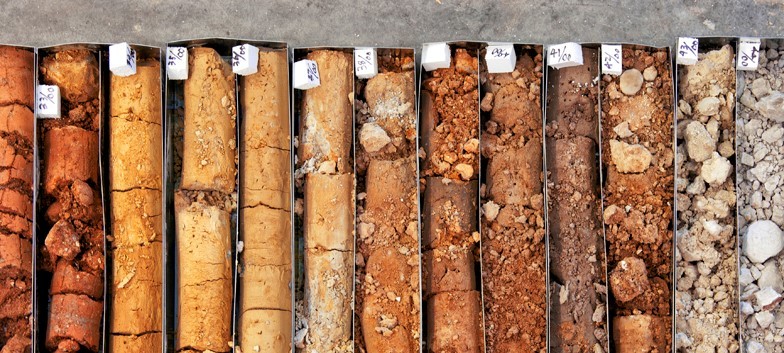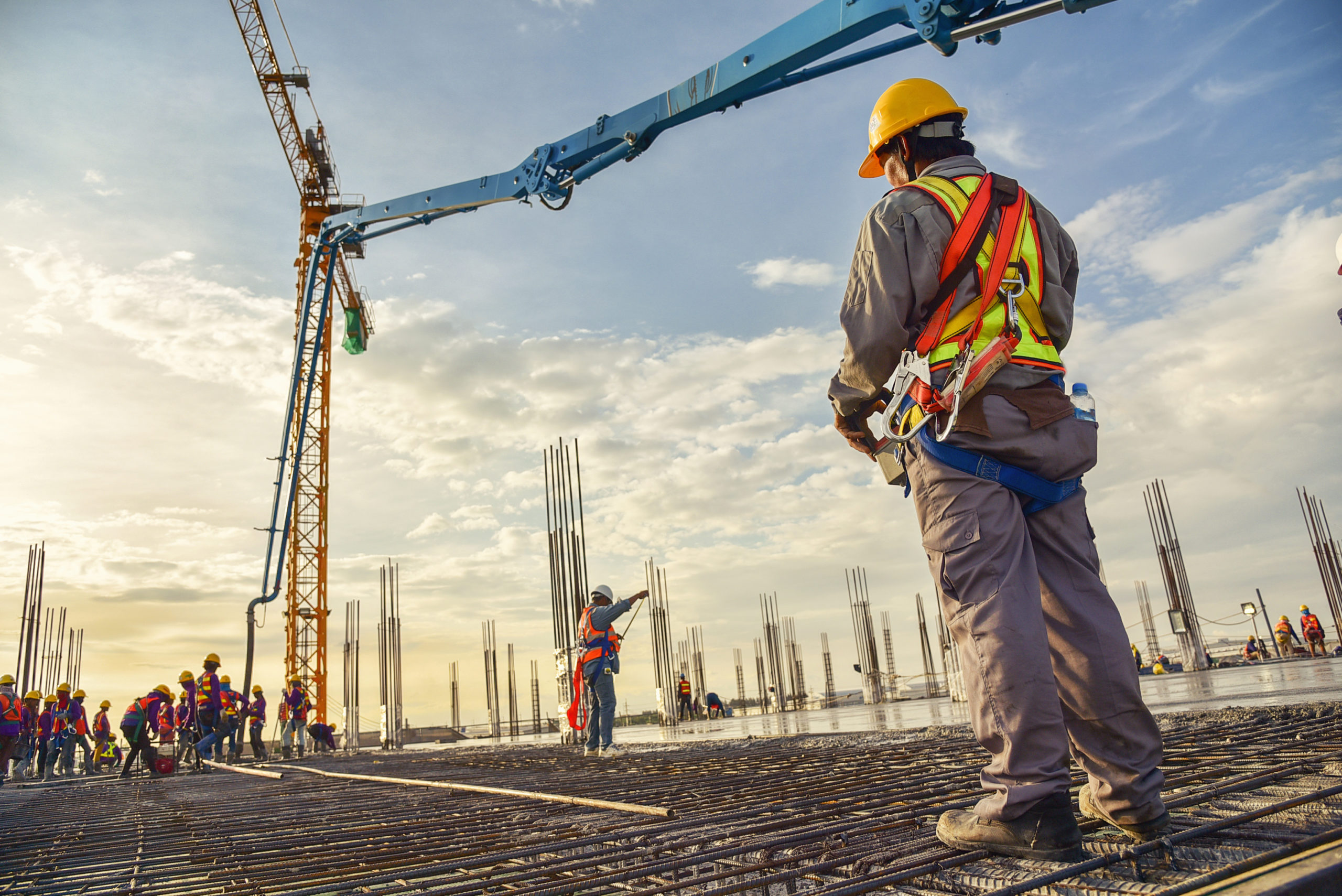Civil Geotechnical Engineering Solutions for Commercial and Residential Projects
Wiki Article
A Thorough Assessment of the Providers Provided by Consulting Engineers in the Area of Geotechnical Engineering: From Site Examination to Task Execution
Consulting designers in geotechnical design play an essential duty in the effective implementation of construction jobs, beginning with extensive site investigations that expose vital subsurface problems. Their competence expands to soil building analyses, environmental influence examinations, and the careful surveillance of project implementation, making sure alignment with safety and security and sustainability standards.Significance of Geotechnical Engineering
Geotechnical engineering is a vital discipline that underpins the safety and security and sustainability of civil facilities tasks. By comprehending the mechanical behavior of dirt and rock materials, geotechnical designers examine the suitability of sites for numerous building and constructions, consisting of buildings, bridges, and dams. This fundamental evaluation makes sure that frameworks can endure environmental aspects and tons without experiencing failing.The importance of geotechnical design extends beyond simple structural security; it also encompasses ecological stewardship. Correct geotechnical assessments contribute to decreasing the ecological impact of building and construction. Via mindful assessment of soil homes and groundwater problems, engineers can create structures and retaining structures that alleviate threats such as erosion and landslides, promoting long-lasting security.
In addition, geotechnical engineering plays a vital function in task expense monitoring. geotechnical works. By recognizing potential issues early in the style phase, designers can suggest appropriate solutions, therefore staying clear of costly delays and redesigns during construction. This aggressive strategy not just improves project efficiency but also significantly decreases dangers connected with unforeseen website problems
Site Examination Strategies
Effective website examination techniques are necessary for collecting accurate data concerning subsurface conditions prior to building and construction. These strategies promote the understanding of the geological and hydrological environment, which is important for ensuring the security and safety and security of proposed structures.Typical approaches used in site examinations include borehole boring, which enables engineers to extract dirt samples at different depths, giving understandings right into stratification and material kinds. Additionally, geophysical surveys, such as seismic refraction and electrical resistivity, offer non-invasive ways to analyze subsurface attributes over bigger locations. These techniques can aid recognize abnormalities without extensive excavation.
Test pits are an additional important technique, offering straight observation of dirt layers and enabling in-situ screening. geotechnical works. This approach is particularly useful for superficial excavations and can aid assess groundwater degrees. In addition, cone penetration examinations (CPT) are significantly used, as they provide continuous profiles of dirt resistance, which helps in establishing soil toughness and layering.
Each of these methods plays an important role in creating an extensive understanding of website conditions, allowing consulting engineers to make informed choices and suggestions throughout the job lifecycle. Exact information collection throughout the website investigation phase is critical to mitigating threats and making sure effective project project geotechnical engineer application.
Dirt Residential Or Commercial Property Assessment

The analysis process generally involves a combination of laboratory tests and area investigations. Key properties such as shear stamina, compressibility, leaks in the structure, and moisture web content are examined to figure out the soil's viability for building purposes. Conventional tests, including the Atterberg limitations, Proctor compaction, and triaxial shear examinations, are typically employed to gather data on soil actions.
In addition to these tests, in-situ methods such as the Requirement Penetration Test (SPT) and Cone Penetration Test (CPT) offer important understandings right into soil stratigraphy and density. The outcomes of these assessments notify designers regarding possible obstacles, such as dirt liquefaction or negotiation, allowing them to devise ideal reduction methods.
Environmental Impact Examination
Environmental impact assessment plays a critical function in the preparation and implementation of design tasks, particularly in geotechnical engineering. This procedure involves evaluating the potential environmental effects of suggested projects on soil, water, air high quality, and bordering communities. Consulting designers make use of different methodologies, including site analyses, modeling, and area research studies, to identify and evaluate these influences.The assessment usually starts with the recognition of standard ecological problems, which functions as a recommendation for anticipating possible modifications. Engineers analyze aspects such as disintegration, groundwater contamination, and habitat disturbance, guaranteeing that all appropriate ecological regulations and guidelines are complied with throughout the task lifecycle. Stakeholder interaction is also an integral component of the evaluation procedure, as it fosters communication between job developers, regional neighborhoods, and governing bodies.
Additionally, reduction techniques are developed to deal with identified influences, allowing designers to propose choices or modifications to project designs that enhance sustainability. This aggressive approach not just decreases negative impacts on the environment yet additionally advertises public trust fund and conformity with environmental regulations. Inevitably, efficient environmental influence evaluation strengthens the general honesty and stability of geotechnical engineering tasks, sustaining liable development practices.
Project Application and Surveillance

Surveillance is a vital component of task execution. Designers make use of numerous methods, such as instrumentation and field examinations, to examine soil behavior and structural reactions in real-time. This continual tracking makes it possible for the recognition of any type of variances from expected performance, enabling prompt treatments to mitigate risks.
Moreover, seeking advice from engineers preserve open communication with specialists and stakeholders throughout the procedure. Regular website inspections and report card ensure that all celebrations are educated about project standing and any arising worries. By fostering cooperation and openness, consulting designers help with an extra effective implementation procedure, consequently enhancing project results.
Eventually, efficient task implementation and monitoring not just maintain safety and high quality criteria but also add to the overall success of geotechnical jobs, guaranteeing they meet their desired functions sustainably and sensibly.

Conclusion
Finally, the function of getting in touch with designers in geotechnical design includes a vital series of solutions that ensure task success. From extensive website investigations to detailed soil residential property evaluations and ecological impact evaluations, these professionals prepared for secure and lasting construction methods. Constant surveillance throughout job execution further guarantees architectural stability and stakeholder communication. Inevitably, the complex payments of speaking with engineers are essential in resolving the intricacies of geotechnical difficulties in modern-day design jobs.Report this wiki page